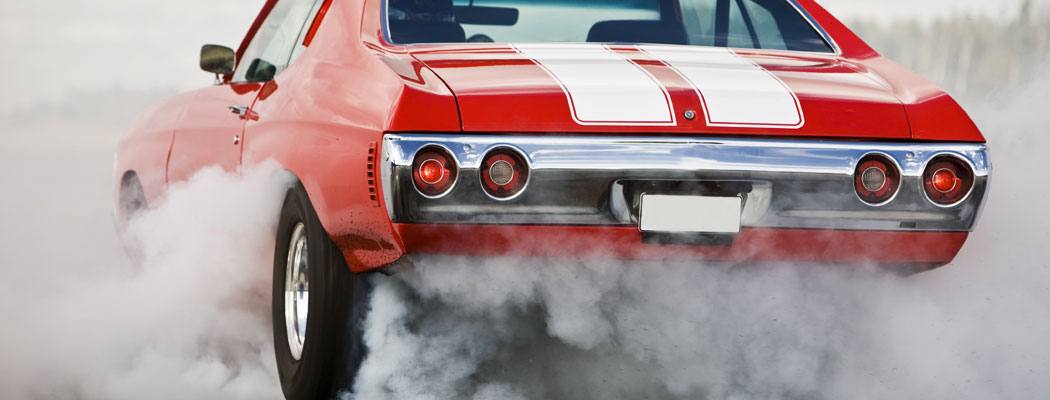The Importance of Traction
Anyone who has driven their car, SUV or light truck up a slippery slope may have noticed that one wheel will begin to slip before the other. Once this happens, the vehicle struggles to continue up the slope, usually with one wheel spinning. The slipping wheel will spin-up and take power away from the other wheel in the axle. Even on a level area that is slippery, the one drive wheel will break traction and spin-up. In addition, on a soft surface such as snow, mud or sand will cause the spinning wheel to sink itself in deeper and deeper causing the vehicle to get stuck. Aside from the inconvenience and annoyance of getting stuck, there are safety issues to consider like risking injury while trying to free the vehicle, and increasing the chance of having an accident.
Traction is also important for outdoor enjoyment and recreation. Whether you want your muscle car to lay two stripes when coming off the line, are trying to get your family to their favorite skiing spot, or are getting ready for a weekend of recreational off-roading, hunting, or fishing, you need traction.
Open Differentials
Very poor traction on low-friction surfaces is a characteristic of conventional “open” differentials that are common today as standard equipment on most rear wheel drive vehicles. This century-old technology delivers virtually all the engine power to the wheel that begins to slip first. Because the wheel that begins to slip has the lowest amount of traction and because all the power is delivered to that slipping wheel, there is insufficient power applied to the non-slipping wheel to adequately propel the vehicle. Although open differentials work adequately on ideal driving surfaces, they perform poorly under adverse traction conditions.
Electronic Stability or Traction Control
Electronic stability or traction control detects wheel spin and activates when one wheel loses traction. It applies braking action to a spinning wheel and holds back the throttle, all in an attempt to propel the vehicle forward using the traction remaining in the other wheel. Electronic stability or traction control is usually designed to work in conjunction with the vehicle’s anti-lock braking system (ABS), and is adapted primarily to passenger cars rather than heavier duty vehicles. Even with light duty applications, performance results are inconsistent. Car owners with electronic traction control often learn that their traction improvement is so limited they can’t even climb their driveways after a light snowfall. Therefore, on/off switches are used with almost all electronic traction control systems. Because of their idiosyncrasies, some drivers opt to leave them turned off, providing no traction benefit whatsoever.
4 Wheel Drive
The increasing demand for more traction has made 4×4’s so popular that they continue to be produced in record numbers year after year. But four-wheel drive is a misnomer that misleads consumers into believing that they have the ultimate traction vehicle. Many four -wheel drive vehicle owners get stuck in situations they believed their vehicles could easily handle. As surprising as it seems, most 4×4’s are equipped with the same open differentials with the same shortcomings as are found in two-wheel drive vehicles.
A small percentage of 4×4 owners understand all of the ramifications of 4-wheel drive operation and how to fully utilize the potential of their vehicle. It’s an unfortunate reality that vehicle performance sometimes is poor even in brand new 4-wheel drive vehicles. Thankfully 4×4’s can be upgraded with the Powertrax line of EXTREME TRACTION SYSTEMS to achieve the extreme traction performance that experienced drivers’ demand of their 4-wheel drive vehicles.
Limited Slip/Posi Differentials
Limited-slips are an ideal solution for increased traction and performance. Upgrading to a posi-traction differential when purchasing a vehicle, or adding an aftermarket limited slip differential will immediately provide demanding drivers with a vehicle that transfers more engine power to the wheels that matter.
Limited-slip differentials behave similarly to open differentials when all wheels have equal traction. Limited-slips and posi units utilize a variety of friction mechanisms to smoothly and quietly transfer power to the non-slipping wheel as needed. Some limited slip/posi units utilize friction plates to achieve this while other types feature spiral gearing to achieve similar results. The best limited-slip differentials are able to vary the amount of torque sent to each wheel, based on engine RPMs and wheel slip. Overall, limited slip/posi units are a quiet, affordable and durable option in lieu of the traction limitations imposed by conventional open differentials.
For more information on the Powertrax line of limited slip/posi units see: GRIP LS and GRIP PRO.
Locking Differentials
Another example of Powertrax EXTREME TRACTION SYSTEM’S traction enhancing technology, locking differentials, will lock the two drive wheels together when the vehicle is driving in a straight line. They deliver straight line driving performance similar to racing “spools” that solidly connect the axles together. When powering straight ahead, engine power is equally delivered to both drive wheels. However spools, when turning, will not allow both wheels to differentiate – resulting in a dangerous condition called “wheel hop” which can result in loss of control of the vehicle. Spools should only be used in dedicated use performance vehicles that are trailered to events. Locking differentials actively and automatically work to prevent wheel hop, allowing full wheel differentiation when cornering and returning to a locked state when the vehicle is going straight again.
Designed for maximum traction and performance that is easy to install – without requiring differential gearing to be reset, “drop in” locking differentials are popular with home mechanics. While most drop in lockers are nearly as strong as a solid racing spool, some models produce a ratcheting noise while cornering. Some performance oriented drivers are reassured by the sound, knowing that their wheels are now “locked”. Drivers who prefer more quiet performance should spend a little more to purchase lockers that will lock their axles together using a quieter synchronized mechanism.
For more information on the Powertrax line of lockers see: GRIP LOK, Lock-Right, and No-Slip.
.

